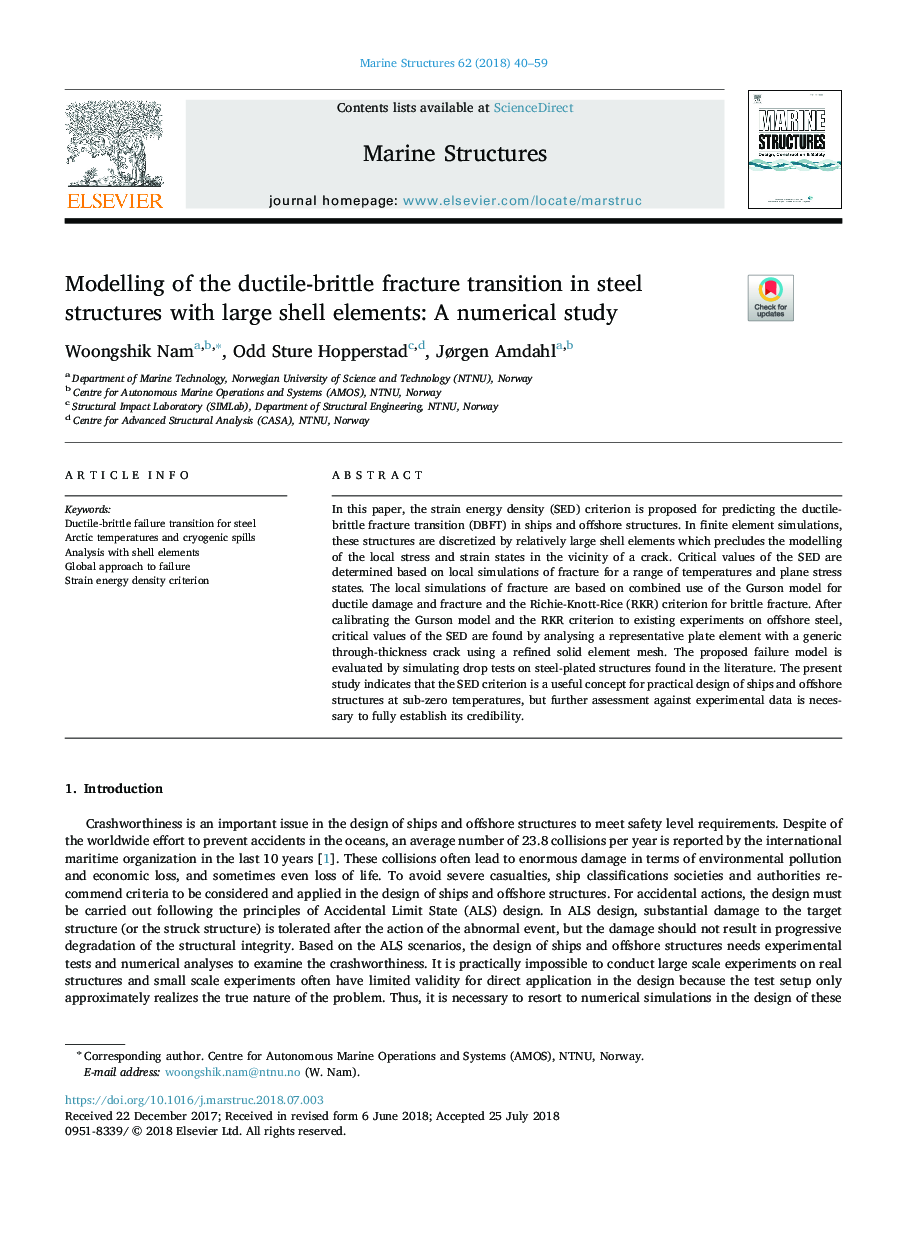| Article ID | Journal | Published Year | Pages | File Type |
|---|---|---|---|---|
| 6757857 | Marine Structures | 2018 | 20 Pages |
Abstract
In this paper, the strain energy density (SED) criterion is proposed for predicting the ductile-brittle fracture transition (DBFT) in ships and offshore structures. In finite element simulations, these structures are discretized by relatively large shell elements which precludes the modelling of the local stress and strain states in the vicinity of a crack. Critical values of the SED are determined based on local simulations of fracture for a range of temperatures and plane stress states. The local simulations of fracture are based on combined use of the Gurson model for ductile damage and fracture and the Richie-Knott-Rice (RKR) criterion for brittle fracture. After calibrating the Gurson model and the RKR criterion to existing experiments on offshore steel, critical values of the SED are found by analysing a representative plate element with a generic through-thickness crack using a refined solid element mesh. The proposed failure model is evaluated by simulating drop tests on steel-plated structures found in the literature. The present study indicates that the SED criterion is a useful concept for practical design of ships and offshore structures at sub-zero temperatures, but further assessment against experimental data is necessary to fully establish its credibility.
Keywords
Related Topics
Physical Sciences and Engineering
Engineering
Civil and Structural Engineering
Authors
Woongshik Nam, Odd Sture Hopperstad, Jørgen Amdahl,
